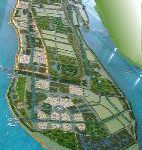Last November’s chemical pollution disaster on the Songhua River in northern China propelled the country’s water problems into the news around the world. By no means the first of its kind, it caught the attention because of its scale – depriving millions of people in and around Harbin of drinkable water for several days – and its extent, threatening to spread toxic contamination downstream into Russia. Even more alarmingly for the Chinese authorities, it also provoked the kind of public anxiety that the country’s stability-conscious leaders know they cannot afford to ignore.
In the wake of this disaster, the head of the State Environmental Protection Agency (SEPA) was replaced. His successor, Zhou Shengxian, was swift to offer reassurance, promising safety inspections and stricter monitoring of the 21,000 chemical factories located along the country’s rivers and coastline. “The Chinese government”, he told a press conference in January, “has made a very timely and determined decision to stop the conventional approach of development, which could be characterised as ‘pollution and destruction first, treatment later.’”
Five months later, SEPA’s latest report on its activities and priorities gave pride of place to controlling water pollution as China’s most important environmental task, with a particular focus on providing drinking-water security. And just a month after that, in July 2006, action on water pollution was top of the government’s list of environmental spending priorities. In particular, He Bingguang of the National Development and Reform Commission (NDRC) promised sewage treatment work on an unprecedented scale, within an overall environmental investment programme amounting to 1,400 billion yuan [U.S. $175 billion] – or some 1.5% of China’s GDP for the next five years.
But such improvements, vital as they are, can only tackle part of the problem. The bottom line is that China has just 8% of the world’s fresh water to meet the needs of 22% of the planet’s population – and, in the words of the Worldwatch Institute, “virtually the entire northern half of the country is drying out”.
Clearly, China can’t afford to go on wasting this scarce resource by polluting its rivers and groundwater as it has done. Facing up to the true cost of water must be part of any more sustainable equation. Historically, it has been kept so cheap at the point of use that there was little incentive to treat it as a scarce resource. But that’s starting to change. Take Beijing, one of the cities that suffers the most acute water stress, with only one eighth of the national average volume of water per person. In the last 15 years, it has raised its residential water prices more than 20-fold. Industry is facing the prospect of more realistic charges too. And this April, new rules came in governing water use in agriculture, which still accounts for almost two thirds of total consumption. Farmers can still take freely from their own ponds for personal consumption, but permits and charges are being more rigorously applied for abstraction from rivers, lakes and underground supplies. Progress is under way too, in more efficient irrigation methods – to replace the notoriously wasteful flood irrigation which is still so widely used.
It is typical of the Chinese leadership that it sees large-scale engineering as part of the answer. Its huge and controversial hydro-electric dam projects, epitomised by the Three Gorges, aim to contribute to water-supply management as well as meeting power needs. But even these are put in the shade by the size and ambition of the recently launched South-North Water Diversion Project. This massive undertaking is intended for completion by 2050 at an expected cost of almost 500 billion yuan. The idea is to tap into the relatively plentiful water of the Yangtze river system to bring relief – to the tune of 45 billion cubic metres of water a year – to the parched north.
Many environmentalists doubt that the Yangtze system can afford to be deprived of this much flow. Others worry, too, that water losses en route will be punitively high. But no one could dispute that the north sorely needs the water. Problems of inadequate supplies there have been exacerbated by environmental degradation and a five-fold increase in the use of river water for irrigation.
The South-North water diversion project may involve massive expense and engineering skill, but that has not saved it from being likened to “a cup of water to put out a bonfire – not enough to quench the thirst.” Those are the words of Ma Jun, whose book, China’s Water Crisis, made him one of the country’s best known and most influential environmentalists. Ma sees water shortage as such a potent time bomb that some cities around Beijing and Tianjin will have no water left in just five to seven years.
Hence the importance of some of the innovative solutions that are emerging around the country. Meeting its water challenge will require all the ingenuity, traditional wisdom and technological expertise that can be mustered, both from its own experience, and from international co-operation.
The author: Roger East is managing editor of Green Futures, the U.K.’s leading magazine on environmental solutions and sustainable development.
This article will appear in “Greening the Dragon: China’s Sustainability Challenge”, a special supplement produced by Green Futures magazine, to be published in September 2006. www.greenfutures.org.uk
Homepage photo by Wam Mosely


